EPISODE 2: 13 & 1/6 EXCELLENT PRINT-TO-FILM ADAPTATIONS

The Virgin Suicides (1993/1999)
The only Jeffery Eugenides novel that I’ve ever enjoyed is brought to life in the only Sofia Coppola film that I’ve ever enjoyed. Coincidence? Originally published as a short story in The New Yorker, The Virgin Suicides was purchased by Warner Brothers on the condition it be fleshed out into a full length novel. The book, aside from being an amazing debut for a young writer, also stands as one of the greatest novels of our generation. The tale of five sisters, all beautiful, complex, and aloof, is told through the eyes of four neighborhood boys who knew them before the titular event. Following the deaths, these young men, playing at a modern day version of The Hardy Boys, interview classmates and scrounge through garbage bins, collecting the clues which they hope will somehow reconstruct the lives of these young girls about which they realize, all too late, they knew nothing. Eugenides’ bold voice gives this novel such authority over the minds of these adolescent girls, that it’s no wonder the book was adapted for the screen and directed by a woman. And Sofia Coppola’s direction is spot on. She captures the drudgery of suburban life (as well as the mystical aura which seems to surround these young women) with such precision, that the entire film takes on an almost dreamlike quality. Far from a run-of-the-mill coming-of-age drama, this film actually breeds feelings within the viewer, reminding you of your own teen-age and the terror you may have felt at the thought of being trapped there; too young to be out on your own, too old to be told what to do. A moody soundtrack by Air fleshes out the vibe, perfectly accentuating the aforementioned dreamlike quality of the film.
A Clockwork Orange (1962/1971)
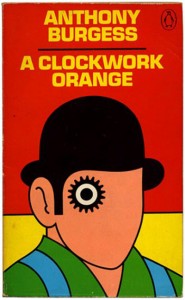
Blending controversial social commentary with just a slice of biting satire, Anthony Burgess’ novel rips through the heart of a dystopian Britain from the not-too-distant future. Noted most often for the fact that the book was written in a language which Burgess himself invented, Orange tells the tale of young Alex, a 15-year-old miscreant who leads a gang of anarchists on a nightly, drug-fueled raid on the burned out shell of what once was London. Assault, rape, robbery, and theft are just how these kids get their kicks. But when Alex’s mates grow tired of the way he runs the gang, he becomes a sacrificial lamb, thrown to the wolves after a robbery goes awry. In the hands of the central government, Alex is subjected to the experimental Lovidico treatment, where-in he is conditioned to become physically ill at the thought or sight of violence. Released back into the world, young Alex finds himself victimized by the very people he bullied and abused before his incarceration and unable to defend himself due to the treatment he endured at the hands of the state. Stanley Kubrick’s film is a rollicking adventure, tinted red with neon and blood. The camera delights in watching as Alex and his droogs rob, rape, and pillage with the same disregard you or I might have for the lives of insects. Grotesquely distorted angles and imaginative use of lighting give this film a grimy texture which both accents the futuristic feel and adds an air of humanity to the inhumane proceedings.
Blade Runner (1968/1982)
Do androids dream of electric sheep? This preposterous question posed in the title of Phillip K. Dick’s 1968 novel laid the groundwork for what is still one of the best sci-fi films ever made. Harrison Ford stars as Dekker, a cop whose job it is to hunt down renegade robots in the year 2012. When a robot uprising on a mining ship off the rings of Saturn results in the escape of four such renegades, Dekker leaps into action and the chase is on. This film is simply amazing. Washed in darkness and rain, the futuristic Los Angeles just seems to ooze oppression. Far from the utopia we were promised, this city seems to invite you to misery. Add to that, the underlying theme of technology run amok, and you have a recipe for dystopia that almost dares you to survive just to see how close to reality this all could become. Ridley Scott’s direction is so subtly genius, that much of the subtext is lost on a single viewing. Multiple versions of this film exist, but just watch the original, voice-over and all. It’s a good starting point and, once you feel that you’ve unraveled all of the mysteries that Blade Runner has to offer, then go back and watch one of the two director’s cuts where-in the narration is replaced by scenes of exposition that may just have you questioning whether or not you got it right the first time around.
The Exorcist (1971/1973)
Yeah, William Peter Blatty has written some other novels in his time, and William Friedkin has directed some other films, but the two of them together knocked out what is still considered one of the scariest flicks ever committed to celluloid. The Exorcist tells the tale of one Reagan MacNeil, a young girl whose life is easy, breezy, and just plain fun. Her mother is a famous actress and the two of them travel the world, enjoying all the benefits that the lifestyles of the rich and famous can provide. Until one day, Reagan wakes up possessed by Satan. Whoa! Talk about a rough morning. Reagan is seemingly unstoppable as she vomits pea soup, twists her head around backwards, levitates several feet above her bed, and tosses grown men around like she was The Incredible Hulk. I re-read this book a few years ago and was impressed by how tense and thrilling it still is after all these years. Then I had the pleasure of re-watching the film with a group of people who had never seen it before. It was amazing to me that, after all these years, and so many horror films later, this movie can still shock and disturb.
Sin City (1991/2005)

When I first heard that there was going to be a film version of one of my all-time favorite comic series I was like “Meh.” I didn’t believe there was any way that the look and feel of Sin City could be captured in a live action film. Even when I heard it was to be directed by Robert Rodriguez I was skeptical. Although he has directed some films which I’ve enjoyed immensely over the years, Mr. Rodriguez has also directed some of the worst movies I’ve ever seen (Desperado, I’m looking in your direction). Thankfully, all my fears were unwarranted. Sin City is simply amazing, no two ways about it. Frank Miller’s panels are brought to life so faithfully, you could almost believe he was standing right there drawing them onto the film. The casting is absolutely superb with every actor looking just like the characters they play, and sounding just like you thought they’d sound. I can’t believe Mickey Rourke didn’t get nominated for an Oscar for his performance as Marv. Sin City is an ensemble piece with three interlocking stories each culled from a different series of Frank Miller’s comic. The overall effect is the creation of a very real world, a city built on sex, drugs, greed, and corruption. Frank Miller has always been a radical voice of dissension, warning us about the dangers of big government and corporate intrusion in our lives. Here he is at his bloody best as his cast of characters, led by crooked cops, prostitutes, and strippers takes on The Man like nobody’s business. Robert Rodriguez directs with the flair which made him famous and the art direction is just sublime.
Fight Club (1996/1999)

Chuck Palahniuk’s debut novel became an underground hit and still stands as one of his few, really good books. David Fincher’s film attained cult status and still stands as one of his few, really good films. The story of a nameless, insomniac narrator who is fed up with his job as an insurance claims adjuster for a gigantic corporation, Fight Club takes off when said narrator’s elegantly decorated condo is blown to pieces while he’s away on business. Having no friends, our hero is forced to stay with a man whom he has only just met on an airplane. Tyler Durden is a man on the fringes of society. He squats in an abandoned house and sells soap made from the fat that he steals out of the dumpster at a near-by liposuction clinic. He also works as a waiter and a movie house projectionist. All of these odd jobs afford Tyler the ability to do the thing he really wants to do in this life; fuck with The Man. It seems as though Tyler is the polar opposite of our hero. Rather than wile away his life at a job he hates so he can buy things he doesn’t need, he acts as a terrorist at the most base level. His anger at his family, his community, and ultimately consumer culture as a whole comes to a head when he and our hero form Fight Club. Each week, they meet in the basement of a local bar and beat the shit out of each other (and anyone else who agrees to submit to this new kind of radical therapy). Ultimately, all of the characters find a kind of peace and redemption in the violence that fuels their lives. Pahlanhuik’s book is a masterpiece of social commentary, and Fincher’s movie is a perfect adaptation. The film is alive with light and movement, the violence is beautiful, and the message is right there in your face the entire time.
Fear[s] of the Dark (The Charles Burns segment) (1985/2007)
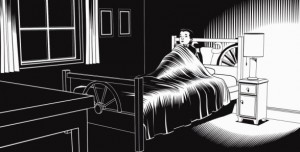
Charles Burns has long been one of my favorite comic book artists. His short stories have a foreboding undertone to them which harks back to our deepest childhood fears. His black and white comics are alive with crosshatching, his characters usually ugly and often deformed, and there are elements of sci-fi and horror in everything that he does. For Fear[s], Burns and five other graphic artists have adapted their stories into short, animated films. I was so excited to see this film. Long have I waited for the day when a Charles Burns comic would come to life for me (an oft whispered rumor has it that David Fincher is adapting Burns’ full length novel Black Hole, but…). Burns’ segment here did not disappoint. The story Ill Bred, originally published in Kitchen Sink Comix’ Death Rattle #1, comes brilliantly to life. Flawless in its intensity, even Burns’ crosshatching style seems to vibrate on the screen as we watch in horror, the events which unfold. The story concerns a man who finds a strange creature in the woods behind his house and lives to regret it.
Requiem for a Dream (1978/2000)
Harvard grad Darren Aronofsky wowed and confused us with his films Pi and The Fountain. His latest film, The Wrestler, earned Mickey Rourke the Oscar nod I thought he deserved for Sin City. But Aronofsky’s best film was his 2000 adaptation of Hubert Selby Jr’s 1978 novel Requiem for a Dream. Updated to our day and age, Requiem follows the adventures of three friends and Jared Leto’s mom. They all have dreams, and they all have drug problems. Selby’s book has the gritty intensity of the writings of William Burroughs and it introduced drug addiction to a whole new generation of readers. The movie is even worse. Shot and lit with a griminess that makes the whole world feel dirty and raw, Requiem for a Dream will show you things you never wanted to see. This is the type of film that sticks with you long after the credits roll.
Riki-Oh (1983/1991)
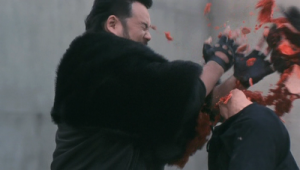
Adapted from a Japanese Manga, and it shows. Riki-Oh is a comic book movie in every sense of the word. In a futuristic prison, the warden is a scumbag and the cell blocks are run by renegade gangs. Enter Riki. He’s a man on a mission and he’s not gonna be pushed around. See Riki punch through a man’s chest. See a sumo wrestler explode a man’s head with the clap of his hands. See a nail puncture a man’s eye. See another man ground into hamburger. It’s all here, everything except for a budget that is. This movie was so cheaply made that you may find yourself laughing at just how cheesy it is, but the fact remains, it is a true and winning adaptation of the source material.
Barfly (1987)
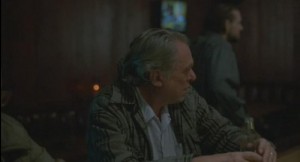
Not really an adaptation, this screenplay was written specifically for the screen by the late, great Charles Bukowski. Many of the vignettes which make up this film are adapted from his books however. Mickey Rourke plays Henry Chinaski, a down on his luck poet who cares only about getting drunk and getting laid. Barbet Schroder’s film beautifully captures the sleaze that was Sunset strip in the ‘80s. Far from the madding crowd of the walk of fame, this is the real Hollywood. Success comes knocking on Henry’s door when he meets a beautiful and wealthy woman who offers to publish a book of his poetry and make Chinaski famous. Although initially taken in by the lifestyle, Henry realizes that his place is among the drunkards and whores downtown, not among the wealthy and elite of the Hollywood hills. Watching this film (and reading its companion novel Hollywood), one can’t help but feel the rage which Bukowski always had for the “haves” of this world. Bukowski lived a life of madness, of drunken insanity. He laid with whores and partied with derelicts, but those were his people. They loved him, and he tolerated them. This film feels like a Buk novel come to life. Schroder was definitely a fan and this film is his homage to the writings that so many of us fell in love with over the years. The movie is a tight piece of cinema, clocking in at almost exactly 90 minutes, but this scant running time actually serves the movie. Not a scene or line is wasted.
Poison (1991)
Inspired by the writings of Jean Genet, and directed by a filmmaker whose only previous credit was a movie about Karen Carpenter made entirely with Barbie dolls, Poison shapes up as one of the most unique and interesting features of all time. Three of Genet’s stories are highlighted, each told in a different fashion. The effect is such that each story could be released and stand on its own as a short film. Hero is shot in the pseudo-documentary style that is so popular amongst no-budget filmmakers now-a-days. Horror has the look and feel of a 1950s sci-fi movie. And Homo is shot with a wistful, dreamlike quality which transports the viewer to a strange prison where the most masculine men are prized by the predominantly homosexual population. Haynes’ direction is amazing. At once capturing the feel of an underground film while also showing off an original style and feel. Haynes would later direct Far From Heaven, an amazing film about race relations and homosexuality set in the 1950s.
Ghost World (1993/2001)
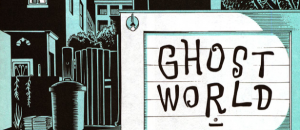
Hands down, Daniel Clowes is my favorite comic book artist and writer. Like myself he is a fan of many things old fashioned and that esthetic comes through in his drawings. Ghost World was one of the many stories serialized in Clowes’ long-running underground comic Eightball. It tells the simple tale of two girls, friends since childhood, who suddenly find themselves growing apart after they graduate from high school.
Separation anxiety personified. Directed by Terry Zwigoff who made the amazing and informative documentary Crumb, Ghost World is not a marvel of direction, moreover, it’s a masterpiece of pacing and emotion. The film allows the characters to breathe, something for which Clowes’ comics are famous. As Barfly is to the writings of Bukowski, so is Ghost World to the works of Daniel Clowes.
Watchmen (1986/2009)
I don’t blame Alan Moore for being a little bitter. His comics have been made into some of the worst films I’ve ever seen. Okay, V for Vendetta was alright, but The League of Extraordinary Gentlemen? Barf. Still, I’ve gotta call him out for being a little bitch when he publicly panned the idea of a Watchmen movie. Especially considering that it was to be directed by Zack Snyder (after Terry Gilliam couldn’t get the backing and David Fincher and Darren Aronofsky dropped out). Now sure, Zach and I got off to a rough start when he had the audacity to do a re-make of one of the greatest films of all time (George Romero’s Dawn of the Dead), but he won me over with his amazing adaptation of Frank Miller’s 300. And Watchmen is effing great. Sure, they tweaked a few things here and there in what was a blatant attempt to make the film more appealing to a wider audience, but that doesn’t change the fact that this is the comic book come to life. Page by page, panel by panel, this film is the real deal. Don’t believe me? Sit down with a copy of the graphic novel that Time magazine called one of the 100 greatest books of all time and pop in your DVD of Watchmen. Now follow along. The comparisons are undeniable. Here is a comic book film made by a comic book fan and it shows. For those who don’t know, Watchmen tells the tale of a group of superheroes who are all on the downside of their careers. In fact, many of them are retired when the film begins. The trouble begins when someone starts killing off heroes and it’s up to The Watchmen to reunite and do what they do best; kick some ass. This film is by turns violent, funny, sexy, and above all, exciting. Do yourself a favor and read the comic, then go out and see the movie. You won’t regret it.
Richard Brooks is a writer and musician. His work has appeared in The New Yorker, The Atlantic, and in several small press magazines. The rumors of his demise have been greatly exaggerated.



